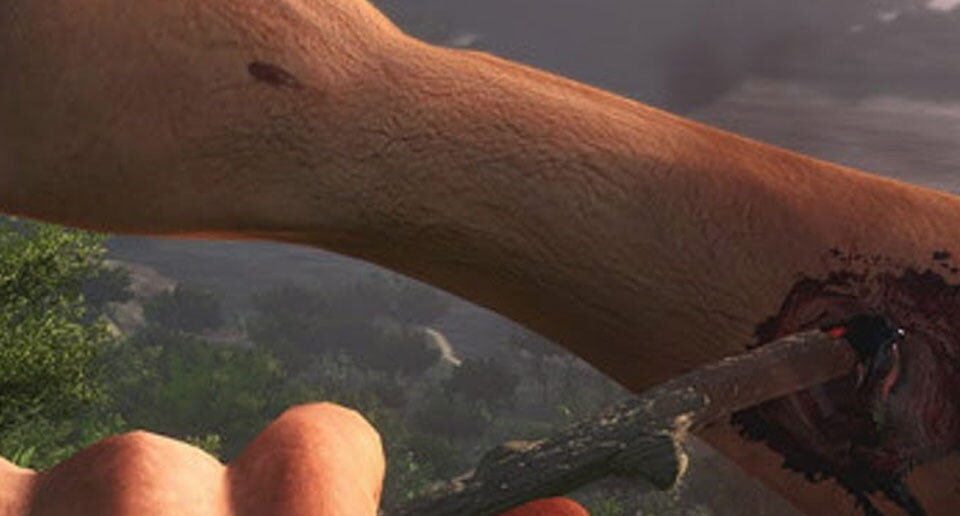The issue of player health is one not often talked about in gaming circles; many are more worried about the prevalence of shooters, brown and grey color palettes, and a slew of sequels.
Today, video games can be more about creating a spectacle than anything else. Big set pieces, scripted events, and massive open worlds the size of small countries are all created to make the player feel like they’re in a movie. What better way to pull this off than by making the player invincible? Allowing the player to shoot a million enemies or drive off a mile high building without getting scratched is the key to creating a visceral atmosphere.
However, these stunts and scripted events sacrifice one of the key features that this medium allows: challenge. We know Tom Cruise won’t die in Mission Impossible 87 because he’s Tom Cruise (feel free to insert your own Scientology jokes). To a certain extent, I think that’s fair. You can’t have your main character die halfway through a film to TV show, especially not one who draws in the big bucks. Although it would be fun, narratively, to try, I don’t think most studios have the guts to actually do it.
The average Joe isn’t Tom Cruise though, and the average video game scenario can only be so scripted. That means there is always a chance for failure, i.e. death. Death slows the action down, and we can’t have that, not when we’re trying to make the player feel like Tom Cruise!
In the past, video games have relied on health packs. Whenever you got shot, or fell from a large height, or simply jumped in the water when video games were going through that phase, you’d lose health and would have to scrounge around for a health kit. It would slow progress down and even been tedious having to trudge back through linear levels to find the hidden health pickup at the start of the level.
The solution to this, at least the one most companies came up with, is regenerating health, the bane of modern video games.
The widespread implementation of regenerating health has removed a fundamental layer of strategy and challenge from our games. Health management and the need to take extreme caution are a thing of the past, replaced in favor of high-octane Michael Bay action. You can run into a room full of enemies and shoot the place up and whenever the strawberry jam of defeat creeps on the screen you can just hide behind a bit of wall for five seconds. The sensation of the hair standing up on the back of your neck, as your body fills with tension as you try to clear a room full of enemies with a scant sliver of health is now replaced with a feeling of boredom as you mow down your fellow-man with ease.
There are a handful of central tenants to design philosophy. Relatively standardized and familiar controls, level design that subtly points you in the right direction without the player realizing it, a free camera system, a compass and map; all are conventions that took years to perfect that have found their way to normalcy.
Somewhere along the line though, regenerating health entered the mix. It’s a lot like the newer mechanic that’s forcing its way into stealth games: the ability to see enemies through walls. No one ever explained how this is possible from a story perspective, and many don’t seem to care anymore. It’s entered the pantheon of “video game logic” when it never needed to, much like that phase of video games and water mentioned earlier.
Of course, the “strap a med kit to your face” method wasn’t exactly realistic either. Not many people would consider running back to the start of a level to find a green box all too thrilling either.
The fact of the matter is gaming has never really got health mechanics right. Ever since Halo, the standard hasn’t been changed, tweaked, or experimented with in any significant way. We only have “med kit to the face,” regenerating health, and in a few rare instances these days one hit deaths.
It’s such a basic function, and yet such an important one, which is why it’s so surprising that not only do so few games get it right, but that no one is experimenting with the formula. I get it, it’s easy to tack on regenerating health, and there are so many other area’s developers can play in, why bother? How many even think about it?
There are a few games that have done a fairly good job, however.
Far Cry has always had the right idea. It uses a combination of health kits and regenerating health to craft one of the best health mechanics in gaming. Your health bar is divided in several segments, and your health only regenerates in individual segments. If one of the segments has lost health entirely, you need a med kit to bring it back up.
The franchise also experiments with making the player perform quick surgery like removing bullets and treating burns, but this is purely cosmetic. You have no control over when or where it’s performed, and it’s just the same two or three animations over and over again.
Something similar is The Last of Us, which tasks you with (for the most part) having to craft your own med kits using cloth and antibiotics you find through levels. This lets the player pick up the supplies they need while also exploring a vast and interesting world, though this is helped by the great narrative and atmosphere of the game.
That’s one of the few things this gluttony of crafting survival games on Steam has done well. They task the player with having to create their own health kits and choosing the right time to use them, as not to waste supplies.
Perhaps it’s time to stop looking at health in games as a throwaway or a handicap, and start treating them like an integral part of the game. I will admit scripted pieces and feeling invincible can have their moments. But nothing is more exciting than hiding behind a wall while enemies are looking for you, your screen flashing red as you slowly bleed out while trying to scrape together whatever supplies you have to heal yourself.
I’m not the first to argue that games are too easy these days, and I probably won’t be the last. If games are going to become challenging again, it starts with overhauling the mechanics of health regeneration. It’ll force the player to be more careful, it’ll create a sense of tension, and it’ll keep the player from blowing through the game in a few hours. Besides, what’s wrong with dying every now and then?






